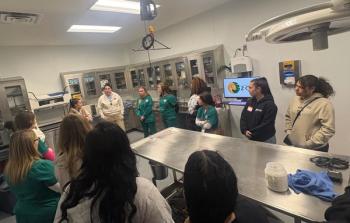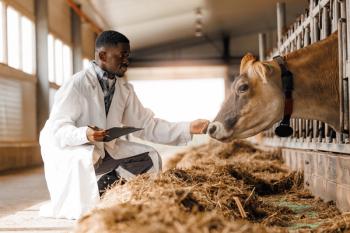
CSU molds test for respiratory disease
Fort Collins, Colo.-A new test to determine a horse's level of exposure to strangles is being hailed as "faster and simpler" than traditional methods.
Fort Collins, Colo.-A new test to determine a horse's level of exposure to strangles is being hailed as "faster and simpler" than traditional methods.
The test, under development at Colorado State University's (CSU) veterinaryteaching hospital, is an enzyme-linked immunosorbant assay (ELISA), whichwould give veterinarians a tool to efficiently assess the horse's risk levelby evaluating the animal's blood antibody titers.
"What we hope to achieve with this test is the ability to definitivelydetermine a horse's risk level so that the owner can more quickly make informedhealth-related management decisions," explains Dr. Ann Davidson, oneof the equine veterinarians creating the test.
"One of the challenges in diagnosing strangles lies with horsesthat are not exhibiting signs of active illness, but are carriers sheddingthe bacteria. It is often through contact with these shedders that otherhorses can become infected."
Strangles is a highly infectious disease in horses that affects the upperrespiratory tract and the lymph nodes surrounding the throat, causing swellingand abscessation.
The basis of this ELISA method, developed specifically for Streptococcusequi, relies on whether there are antibodies to the bacteria in the blood.If an animal has been exposed, the test would detect those antibodies andwould reflect a high titer.
Currently, tests exist only for horses with active signs of disease.The "gold standard" is a laboratory culture of the nasal dischargeor abscess material. Another method is a polymerase chain reaction test,or PCR test.
"The advantage to the ELISA test on the horse's serum is that wecan now determine those horses who may not have been exposed and are atrisk," says Dr. Josie Traub-Dargatz of CSU, another of the test's researchers.
"Once perfected, we hope the test results will be rapid and readilyavailable, making it a very useful tool for equine veterinarians."
The test is funded by a grant from the U.S. Department of Agriculture,the Cooperative State Research Education and Extension Services for theCSU Program for Economically Important Infectious Animal Diseases, and theCollege Equine Research Advisory Council on the Use of Racing Funds forCSU's College of Veterinary Medicine and Biomedical Sciences.
Newsletter
From exam room tips to practice management insights, get trusted veterinary news delivered straight to your inbox—subscribe to dvm360.






